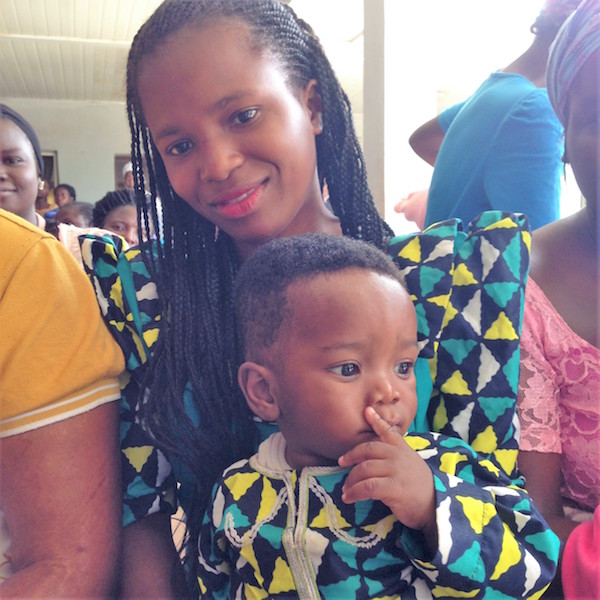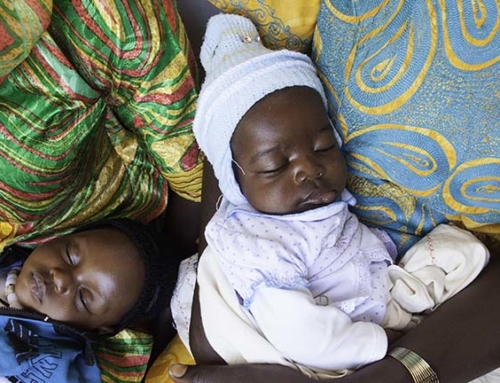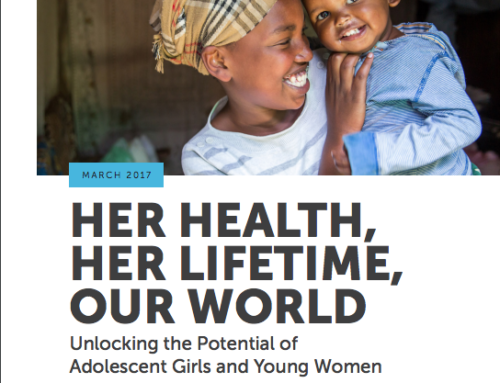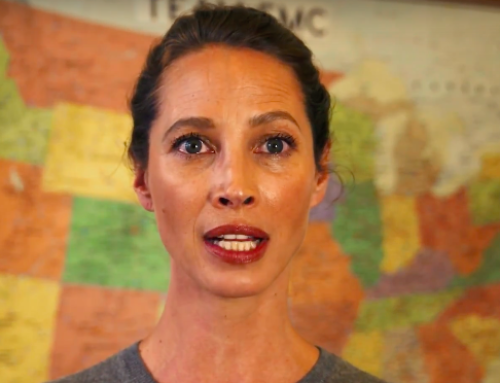Nigeria, Africa’s largest nation by population, has some of the worst maternal health indicators in the world. The Maternal Mortality Ratio (MMR) stands at 576 per 100,000 live births (Demographic and Health Survey 2013). To put it differently, Nigeria has 2 per cent of the world’s population but 10 per cent of the world’s maternal mortality .
Most of these deaths could have been avoided were it not for the delays that bedevil the health system at every stage, often referred to as the “three delays”—in deciding to seek medical care, in reaching a health facility, and in receiving adequate services. First, women are often slow to seek care because they may lack decision-making power in the household, fear the cost involved, and are wary of putting their faith in a formal health care system that does not work properly. Second, poor roads and long distances mean expectant mothers encounter delays in reaching care. Finally, women in labor often don’t receive prompt, qualified, and respectful treatment when they arrive at health centers due to staff shortages or failures, lack of training and supervision, poor facilities, or shortages of essential medicines.
By making the process of giving birth more efficient, Ondo State has kept the cost of the Abiye Program within acceptable limits.
Nigeria’s overall MMR hides significant regional differences, however, and some of the country’s 36 states are making positive progress in improving maternal and child health outcomes. One of the best performers is Ondo State, in the southwest of the country. CSIS hosted its governor, Dr. Olusegun Mimiko, in 2013 to discuss the state’s Safe Motherhood program, known as Abiye in the dominant local language, Yoruba. The early results were promising, and this trip provided an opportunity to see how the program had fared since then.

The State Commissioner for Health, Dr. Dayo Adeyanju, explained that when the current administration took office in 2008, Ondo State had the worst MMR in the southwest region at 775 deaths per 100,000 births. By 2012, the figure was 317 and the trend has continued downward since then.
How did Ondo State move from worst to best performer in the region? First, it took a methodical approach, gathering data on the main causes of maternal death by conducting in-depth interviews with relatives of the deceased. It concluded that too few women were giving birth in a health facility, choosing instead to rely on the services of Traditional Birth Attendants (TBAs). When complications arose during labor, the TBAs did not have the skills to respond effectively.
At the center of the Abiye strategy, therefore, is the goal that all women give birth at a health facility, assisted by a skilled birth attendant. This involves tracking down pregnant women, monitoring them throughout their pregnancy, and gaining the cooperation of TBAs, who are widely respected community figures. Ondo State has trained health rangers—a type of community health extension worker—to each monitor 25 pregnant women in their ward, work with them on a birth plan, and ensure they attend their antenatal appointments. In the early years of the Abiye Program, every expectant mother was given a cell phone so that they could receive regular updates and appointment reminders via SMS. In order to ensure that women could reach health facilities more easily, a fleet of ambulances was distributed across the state to respond to emergency calls by women in labor. Meanwhile the facilities themselves were upgraded and properly equipped.
By making the process of giving birth more efficient, Ondo State has kept the cost of the Abiye Program within acceptable limits. By revitalizing the primary health facilities, women have the confidence to give birth at the lowest level of the system, freeing up space at the district and referral hospitals for the emergency cases. To care for these cases, two mother and child tertiary hospitals have been opened, one in the state capital, Akure, the other in Ondo town.
The Agbebiye or Safe Birth Attendant initiative intends to phase out the role of TBAs in delivery altogether.
Since 2014, a new program has been adopted to build on the success of Abiye. The Agbebiye or Safe Birth Attendant initiative intends to phase out the role of TBAs in delivery altogether. It does so by offering TBAs a small payment each time they bring a mother to a health facility to give birth. At the same time, the TBAs are offered training in alternative occupations such a soap making, catering, and tie-dying, along with microfinance loans to help them establish small businesses. A team of ward monitors, called vanguards, keep an eye on local TBAs to ensure compliance. TBAs who continue to operate face fines or having their premises closed by the authorities. Ondo State officials admit that persuading TBAs to take up new assignments has been tough but that most are now on board. The results have been impressive. While the national figure for in-facility births is 38 percent, the figure in Ondo stands at more than 94 percent.
What are the ingredients for Ondo State’s success in cutting maternal deaths and can they be replicated elsewhere? First, political commitment from the state government and the governor in particular has been critical. This has been accompanied by significant resources. While the share of the national budget committed to health is a measly 4 percent, Ondo State directs 12 percent of its overall budget to health. Second, there is a realization that giving birth is an important event in community life and that even if it takes place in a health facility, the community cannot be shut out of the process. The program has carefully sought community buy-in and cooperation. Finally, the Agbebiye Program relies on incentives to achieve desired outcomes. Not only do TBAs receive payment for handing women over to the formal health system, individual health centers and their staff receive performance bonuses for the number of healthy babies they deliver. This element of the program has attracted the interest of the World Bank, which has been piloting its Results Based Financing approach at health facilities in several Local Government Authorities in Ondo State.
Continued success cannot be taken for granted. Governor Mimiko is nearing the end of his second and final term in office and with elections due in November, it remains to be seen whether a future administration will retain the same level of political and financial commitment to maternal health. The state administration hopes to safeguard the future of its maternal health initiatives by enshrining them into law before it leaves office. Furthermore, state finances are shaky. Ondo was one of 27 states to request a federal bailout soon after President Muhammadu Buhari took office because it no longer had funds to pay its civil servants, including members of its health workforce. Industrial action plagues the health sector in Nigeria and Ondo has been affected in recent months. However, there is a collective pride among the people of Ondo State in the improvements to maternal health and officials in the state ministry of health are determined to protect these hard won gains.
The success of Ondo State should offer encouragement to the United States, which spent approximately $400 million on Reproductive Maternal Newborn and Child Health programs between 2010 and 2015 but has been frustrated by the minimal impact of this investment on the national MMR. Staff from the United States Agency for International Development (USAID) have become more selective in their engagement with Nigeria’s health sector in recent years, diversifying support away from the federal level and focusing on five states where they think there is a better prospect of making progress. This is the right approach in a country where poor governance and weak ownership has been a constant challenge. Going forward, the United States should look for ways to expand the use of creative incentives in their programs as a way to improve performance and accelerate progress in maternal health. Nigeria cannot afford to keep losing so many of its young women to entirely preventable complications from childbirth. As Dr. Adeyanju put it: “Pregnancy shouldn’t be a death sentence.”
Finally, the key to unlocking the epidemic of HIV infections among young women in South Africa involves shifting social norms and human behavior. The phenomenon of intergenerational sex between older men and younger women in South Africa reflects deep rooted social, gender, legal, and economic inequities that cannot be overcome overnight. The DREAMS initiative has an important part to play in shedding light on the overlapping social problems that explain these inequalities and piloting solutions to them but it may struggle to make a major dent in infection rates within its initial two year timeframe.
&nbs






